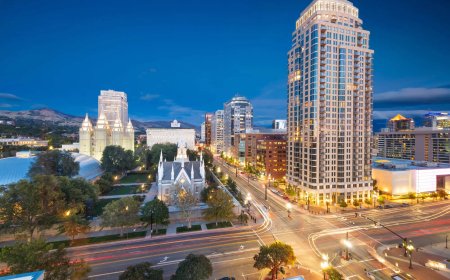How to Build a Durable Warehouse for Long-Term Use
Learn how to build a durable warehouse designed for long-term use. This guide covers site selection, materials, design tips, and safety measures to ensure your warehouse stands strong in Pakistan’s climate.

Building a strong and durable warehouse is very important for businesses, especially in Pakistan. Warehouses are used to store goods safely, protect materials from weather, and help manage stock. A poorly built warehouse can cause damage to products and lead to financial loss.
This blog will explain everything you need to know about warehouse construction in simple words. It covers site selection, design, materials, and important tips to make sure your warehouse lasts for many years.
1. Choosing the Right Location for Your Warehouse
The first step is to pick a good place for your warehouse. The location affects how easy it is to receive and send goods and how safe the building will be.
-
The land should be flat and strong enough to hold heavy loads.
-
It should be near main roads to make transportation easy.
-
Avoid places where water collects or floods often.
-
Make sure water, electricity, and other utilities are available nearby.
In Pakistan, many warehouses are built near industrial areas or on the outskirts of big cities like Lahore and Karachi. This helps in easy movement of goods and reduces land cost.
2. Planning and Designing the Warehouse
A good warehouse design helps use space well and keeps products safe.
-
Make sure the warehouse size fits your storage needs now and in the future.
-
Plan wide aisles for forklifts and workers to move easily.
-
Decide where loading and unloading will happen.
-
Include space for office and security if needed.
The design should also include fire exits, proper lighting, and ventilation for safety and comfort.
3. Strong Foundation and Flooring
The foundation is the base of your warehouse. It must be strong to support the whole building and the weight of stored goods.
-
Concrete foundations are common because they are strong and long-lasting.
-
Flooring should be smooth and strong enough to handle forklifts and heavy machinery.
-
Adding a slight slope helps water to drain properly.
Good flooring also makes cleaning easier and reduces dust inside the warehouse.
4. Durable Structure and Frame
Most warehouses use steel frames because steel is strong and lasts long.
-
Use steel that is treated to prevent rust and damage from weather.
-
The structure must be designed to carry heavy loads and withstand wind or rain.
-
Pre-engineered steel buildings are popular because they are quick to build and reliable.
Using good quality materials ensures your warehouse will last many years without major repairs.
5. Walls and Roofing Materials
The walls and roof protect your goods from sun, rain, and dust.
-
Insulated walls help keep inside temperature steady, protecting sensitive products.
-
Roofing should be waterproof and strong to avoid leaks.
-
Adding ventilation windows or fans helps keep air fresh and controls heat.
-
Using reflective paints or coatings can reduce heat inside during hot summers.
6. Ventilation and Lighting
Proper airflow and lighting are important for workers comfort and product safety.
-
Use exhaust fans, vents, or windows to keep air moving inside the warehouse.
-
Natural light through skylights saves electricity during the day.
-
Use LED lighting for energy saving and better visibility.
Good ventilation also prevents moisture and mold, which can damage stored goods.
7. Safety Measures
Safety is very important in warehouses.
-
Install fire extinguishers and smoke alarms in key places.
-
Mark emergency exits clearly and keep them free from obstacles.
-
Use security cameras to protect against theft.
-
Regularly check the building for any damage or wear.
8. Layout and Organization Inside the Warehouse
How you organize your warehouse affects how easy it is to work and find goods.
-
Keep aisles wide and clean.
-
Use strong and stable shelves or racks for storage.
-
Separate different types of goods to avoid confusion.
-
Label everything clearly for easy identification.
Proper layout improves productivity and reduces accidents.
9. Construction Process Overview
Building a warehouse involves several steps:
-
Preparing and leveling the land.
-
Laying a strong foundation.
-
Installing the steel frame.
-
Fixing walls and roofing.
-
Setting up flooring and drainage.
-
Installing electrical and ventilation systems.
-
Finishing with safety checks and cleaning.
Construction time depends on size and resources but usually takes 1 to 2 months.
10. Challenges in Pakistan and How to Handle Them
Building warehouses in Pakistan comes with some challenges:
-
Heat and humidity can damage goods and materials. Use insulation and ventilation.
-
Power outages mean you need backup power options like generators or solar.
-
Flooding in some areas requires proper drainage and elevated structures.
-
Material availability can delay construction, so plan early.
Working with experienced builders familiar with local conditions helps avoid these problems.
11. Working with Professional Builders
Not every contractor understands warehouse needs. It is best to work with professionals who know:
-
How to design strong, durable warehouses.
-
Which materials are best for local weather.
-
How to meet safety and legal requirements.
In Pakistan, companies like Shelter Engineering have built many warehouses and can guide you through the process.
https://sheltersengineering.com/warehouse-construction-company-pakistan/
Final Thoughts
Building a durable warehouse is an important investment. Careful planning, using good materials, and hiring experts ensures your warehouse will protect your goods for years.
Keep in mind local conditions like weather and power supply when designing and building. A well-built warehouse improves your business efficiency and reduces risks.























